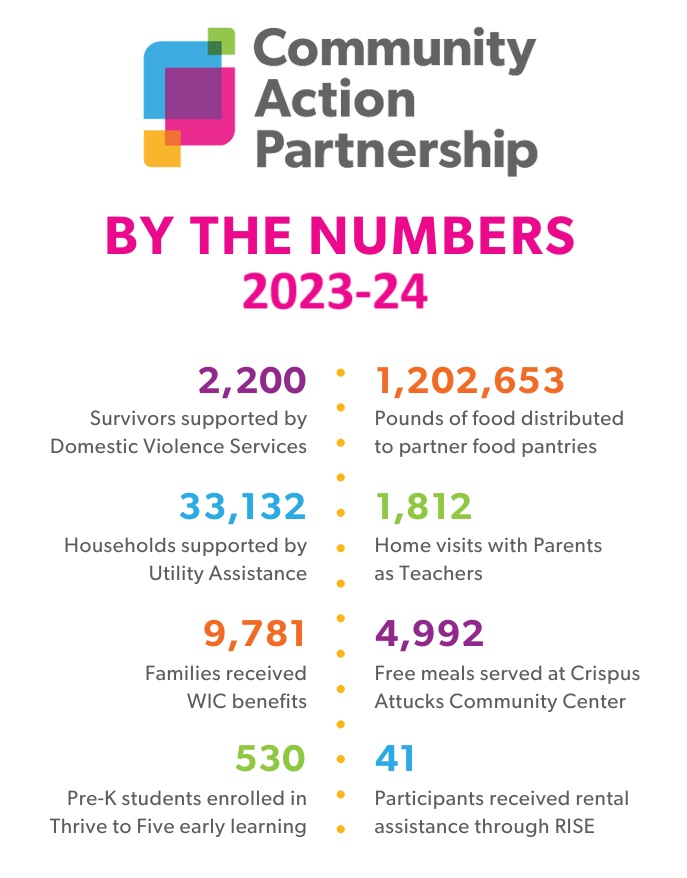Who is Fighting Poverty in Lancaster County? How CAP Uses Federal Funds to Provide Critical Services
By Tim Stuhldreher for the Lancaster County Community Foundation
Community Action Partnership of Lancaster County is the county’s largest anti-poverty nonprofit. Just over 80% of its $48 million annual budget comes from the federal government or is dependent on federal funding, spokeswoman Kristy Aurand said.
CAP offers services in four broad categories of need: Early education, health & nutrition, household social and economic stability and safety & empowerment. It often works in partnership with other nonprofits, like The Factory Ministries, and its impact is felt countywide.

A look at the county-wide impact of CAP’s work, largely funded by federal dollars.
Take Head Start, known at CAP as “Thrive to Five.” Federal funding allows CAP to provide it to more than 360 children; 62% of enrollment is outside Lancaster city, Aurand said. Of CAP’s 6,300 mothers enrolled in WIC (Women Infants & Children, which provides food support to mothers and their children from pregnancy through age 5), 64% are in the county. The same is true for the 2,200 parents and children assisted by Domestic Violence Services: 38% are from the city, 62% from the county.
The administration is seeking to cut nondefense spending for 2025-26 by $163 billion, or 22.6%. It contends it is achieving savings “by reducing or eliminating programs found to be woke and weaponized against ordinary working Americans, wasteful, or best left to the States and localities to provide.”
National advocates are warning that the proposed cuts are unprecedented and would leave a wide swath of working families much worse off. The Center for Budget & Policy Priorities says they “would deepen poverty and hardship and swell the ranks of the uninsured.”
Federal budget negotiations are ongoing, so the ultimate effect on CAP’s budget and the population it serves is unknown. CAP President Vanessa Philbert said the proposed cuts target households and organizations that are already hard pressed.
“We’re talking about working class people,” she said. “We’re talking about folks who are getting up every day, going to work and doing everything they can to just keep the roof over their heads.”
Families are creative, she said. They may, for example, tap food assistance in order to free up money for rent or medical expenses. If all those expenses rise, and federally funded assistance is curtailed, they will suffer.
“Partnership with the federal government is part of the success of how we keep communities thriving,” she said.
One area of particular concern for CAP itself, Aurand said, is the Community Services Block Grant, which has been proposed for elimination. CAP received just over $1 million through CSBG in 2024. It’s highly flexible funding, with portions going to support Domestic Violence Services; the Crispus Attucks Community Center; referrals and case management for individuals and households in need; and the two county senior centers that CAP oversees.
The programs support economic mobility, Philbert said, “and by braiding this funding with private funds from donors and local foundations, we ensure that each dollar goes even further than it would on its own.”
